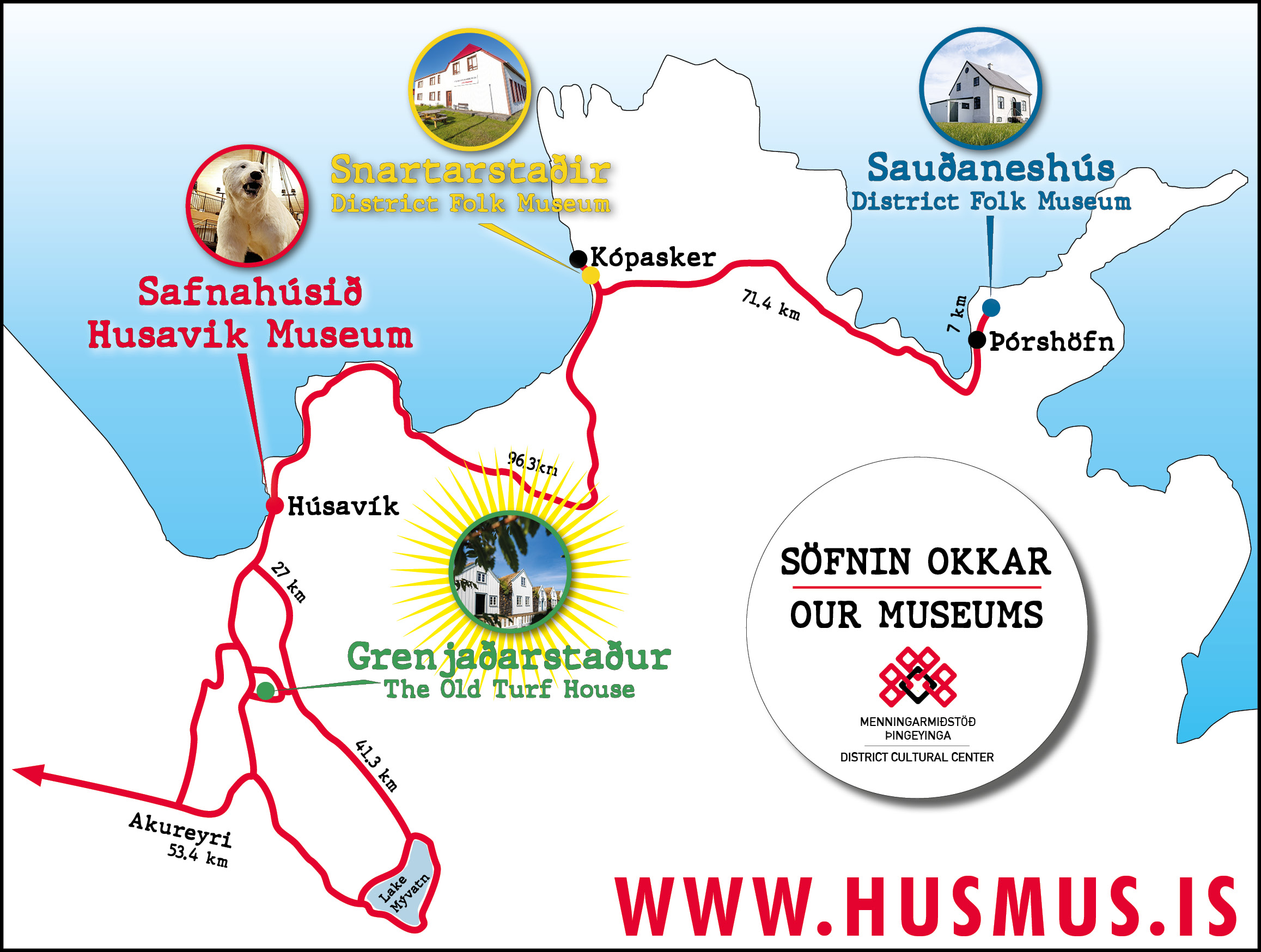OPENING HOURS
Summer: 1 June - 15 August
Open daily 11 - 17
Winter: Closed
Group visits outside opening hours are possible by appointment.
ENTRANCE FEE
Admission: 2.200 ISK.
Senior Citizens / Students*: 1.700 ISK.
Disabled* / Children under 16: Free
Members of Físos* and ICOM*: Free
Groups (10+): 1.900 ISK.
*ID required.
A single entry ticket gives you access to all four MMÞ museums once during the calendar year 2024.
PHONE
+354 864-3688 (summer)
+354 464-1860 (winter)

